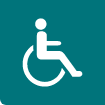When you are told to try to use relaxation techniques for your Complex Regional Pain Syndrome (CRPS), your first thoughts might be of long luxurious warm baths, lounging on the sofa, reading books all day, or lying in bed late in the morning. However, we don’t exactly mean those sorts of activities.
There are many sorts of relaxation techniques that you can use as an alternative therapy or to use in conjunction with your pain self management regime. Here we hope to help you understand how to use relaxation techniques for your CRPS or chronic pain.
Simply put, relaxation is to calm yourself down and also slow down your nervous system, which is likely to be working overtime because of your Complex Regional Pain Syndrome (CRPS) or chronic pain. By relaxing yourself, it should start to reduce the tension in your muscles, help make your pain medication to work better, help you sleep, lessen your anxiety and stress and also stop your pain from getting worse.
When you get a pain spike, a period of intense pain or flare up, you should continue with your pain management, but you can incorporate some relaxation techniques to help it all work better. The actual pain that you have can also lead to stress and tension, so the best thing to help it all is to break the constant vicious cycle by using relaxation techniques.
Relaxation techniques are an integral part of the psychological therapy of chronic pain (Diezemann, A. 2011), as well as Complex Regional Pain Syndrome (CRPS). For more information on the help available for you and your CRPS or chronic pain in terms of your mental health, visit the Burning Nights CRPS Support blog series on Psychological Therapies.
Non-pharmacological methods of controlling your pain, such as relaxation techniques or other alternative therapies, can help you learn to cope with your condition and even give you back a sense of control over your body and your chronic illness (Schaffer, S.D & Yucha, C.B 2004).

TO THE TOP
What Are The Relaxation Techniques for CRPS?
There are a number of relaxation techniques that are available for CRPS or chronic pain, such as deep breathing, biofeedback, progressive muscle relaxation, and guided motion therapy. Each person will have their own way of relaxing and it will depend the individual what works for them. As with many treatments and therapies, it is a trial and error process to find what relaxation technique works to help you self-manage your condition.
Here are just some of the available relaxation techniques that you can use to help you self-manage your CRPS or chronic pain:
- Relaxation Imagery – Relaxation imagery techniques are when you concentrate on something that is not related to your pain, for example it could be a place you’ve been to on holiday or your children or a special dinner you went to with your partner. You then concentrate on your breathing and begin to become aware of your senses and all of your surroundings. Use all of your senses - smell, sound, touch, taste - in these relaxation imagery exercises. Relaxation Imagery techniques and exercises can help you to distract your mind from any stressful thoughts or your pain levels. Visualisation and imagery techniques involve the induction of a relaxed state followed by the development of a visual image, such as a pleasant scene that enhances the sense of relaxation. These images may be generated by the patient or suggested by the practitioner. In the context of this relaxing setting, patients can also choose to imagine themselves coping more effectively with the stressors in their lives. (Vickers, A. & Zollman, C. 2001)
- Muscles Relaxation – Muscle relaxation is where you relax and 'let go' various muscle groups within your body. When you are stressed, whether it’s through pain, your life or other reasons, the stress causes your muscles to tense up. By using the muscle relaxation techniques or the progressive relaxation techniques it can help you feel more calmer and therefore more relaxed. It can also raise your pain threshold and can eventually help you to cope with pain flare ups or any stress an anxiety that is caused by chronic pain or pain conditions like Complex Regional Pain Syndrome (CRPS).
- Gradual or Progressive Relaxation – Progressive Relaxation is to relax different parts of your body gradually starting from your feet up to the top of your head. You concentrate on each area of your body, tense each muscle and then relax the muscle, beginning with your toes and work your way up your body and when you reach you should feel much calmer and more relaxed. If you find a muscle is too painful to tense up then it’s important that you leave the muscle out. This is technique best doing when you are lying down. According to Vickers, A. & Zollman, C. (2001), to learn how to do Progressive Relaxation you need to:
"…sit comfortably in a quiet room. He or she then tenses a group of muscles, such as those in the right arm, holds the contraction for 15 seconds, then releases it while breathing out. After a short rest, this sequence is repeated with another set of muscles. In a systematic fashion, major muscle groups are contracted, then allowed to relax. Gradually, different sets of muscle are combined. Patients are encouraged to notice the differences between tension and relaxation."
- Body Scan Meditation – This is similar to progressive relaxation, but instead of tensing each area, you just focus your thoughts on that area and as you breathe, think that your pain is leaving that particular area.
- Breathing Exercises – Focusing on and regulating your breathing can help you to relax ease your chronic pain. Try to inhale and exhale slowly, trying to let your muscles go loose every time you breathe out. If you suffer from any lung problems, please see your doctor or specialist to check with them before doing any deep breathing.
- Breathing With Gentle Massage – Breathing whilst gently massaging near the area of pain can help, but you should avoid any areas that are red, swollen or tender.
- Mindfulness as Relaxation – Mindfulness centres on remaining aware of how you feel at a particular moment, in the present, both external and internal. If you remain focused and relaxed, you can bring your pain levels down and as such bring your nervous system back down as well.
- Biofeedback – Biofeedback measures your success in making changes to your body’s functions through activities such as guided imagery. Through hand-held machines that provide audio and visual information, biofeedback can measure changes in heart rate and muscle tension and relaxation (Bressert, S. 2015).
- Hypnosis – Hypnosis can distract people from pain or alter the perception of pain. People in severe chronic pain might try hypnosis as a form of distraction. For those in moderate pain controlled by medication, hypnosis can help them reduce their dosage and clear their minds. Hypnosis can also numb areas of the body where people experience milder pain. (Bressert, S. 2015)
- Slow Music – Listen to some slow music, using headphones. For instance, listen to some soothing sounds - one CRPS sufferer has suggested 'The Sounds of the Earth' from Thunderstorm via Last FM.
- Yoga and Tai Chi – Both of these arts are brilliant in helping with your relaxation. Yoga involves a range of poses, both moving and stationary, and also incorporates deep breathing. Injuries can happen if you don’t practice Yoga correctly, so the best suggestion is to learn by attending group classes or follow a Yoga DVD. Yoga teaches you to lessen your stress and anxiety and can improve your balance, strength and stamina. Yoga practice involves postures, breathing exercises, and meditation aimed at improving mental and physical functioning. Tai Chi is similar to Yoga, but it has roots in martial arts. Just like meditation, you focus on your breathing and stay in the present. You use long flowing movements at your own pace. It has emphasis on relaxation, concentration, reducing stress, calming of the mind and the circulation of energy through the body. Tai chi is a gentle system of exercises, originating from China. The best known example is the "solo form", a series of slow and graceful movements that follow a set pattern. It is said to improve strength, balance, and mental calmness (Vickers, A. & Zollman, C. 2001).
- Qigong – Qigong (pronounced "chi kung") is another traditional Chinese system of therapeutic exercises. Practitioners teach meditation, physical movements, and breathing exercises to improve the flow of Qi, the Chinese term for body energy (Vickers, A. & Zollman, C. 2001).
You could also create a 'Relaxation Journal' to help you concentrate your mind by writing in your journal and planning your relaxation method for that day, to enable you to vary what you do on each occasion you use your relaxation techniques. This is similar to writing a pain journal.

It is a good idea to try different methods for relaxation because whilst a technique might work for one person, it might not help another. Whichever relaxation exercise you do, it will take practice, so don’t worry that it may not have helped the first few times - keep going and try a relaxation exercise at least once every day. There are no studies to say which method is better than another, it is all about preference and what works for you, not for everyone else.
Your pain levels will generally alter from day to day and so will your ability to relax, so one thing you don’t want to do is to force your relaxation to happen. If you do try and force yourself to relax it will become harder and harder until you give up, which is not what we want. If any of the relaxation techniques make your pain worse or you think is not helping, you must stop straight away and always contact your GP or pain specialist let them know what exercises you have been doing and ask them for alternative relaxation exercises.
According to the NIH website (2021), studies on the effectiveness of relaxation exercises for chronic pain have found promising, thought not conclusive, evidence that guided imagery may relieve musculoskeletal pain (pain involving the bones or muscles) and other types of pain.
TO THE TOP
Relaxation Exercises To Try
10 Minute Deep Breathing Relaxation Exercise
- Choose a quiet place for your relaxation
- Get yourself in a comfortable position either lying down or sitting up
- You can close your eyes
- Take one deep breath in
- Then, keep breathing deeply and slowly
- Allow your shoulders to drop and relax your hands
- Continue with some slow deep breaths until you feel your body start to feel less tense
If you want to continue with the above, you can...
- Start to tense your various body muscles such as muscles in your legs, arms and then relax those muscles
- Once you feel your different muscles relax, you can begin to slowly open your eyes and bring yourself back to where you are and the present
This short exercise should take you around 10 minutes to do. If works for you, try it at least once a day.
Visualisation Relaxation Technique for your CRPS or Chronic Pain
Some people use visualisation to help with their relaxation techniques. This is where people attempt to reduce their pain levels by 'visualising' something lessening the pain. Some people also call this guided imagery. Some say that it is like traditional meditation so you don’t just use your vision but your smell, touch and taste. Here’s a simple visualisation relaxation exercise:
- Get yourself in a comfortable position either standing, sitting or lying down
- You can choose to sit in silence, listen to a relaxation CD or whilst listening to some slow music. If you are thinking yourself to be at a beach or near the sea you can listen to the sounds of waves
- Think about whatever place is most restful and calming, for example picture yourself on a tropical beach, in your favourite childhood spot or even in a forest - visualise this image, think about sounds, smells, feelings as well as what you see
- Enjoy the feeling of relaxing in this place
- When you’re relaxed and ready, slowly open your eyes and allow yourself to come back to the present
Mindful Visualisation Relaxation Exercise
- Get yourself comfortable either lying down or sitting
- Listen to some slow music or to the sounds of waves crashing on a beach or simply sit in silence
- Try to visualise / see your pain, think about how it feels, what it could look like if you could see it
- Now think about reducing your pain in some way, e.g. burying your pain in the sand, putting the pain in a box, putting the pain behind a glass door or screen or setting a hot sun on the pain
- Be as visual as you can be, you never know it may work for you! Don’t just pick an image because it has been mentioned as it must be personal to you
- When you are ready slowly open your eyes and let yourself come back into the present
It is not a problem if you have a feeling that you’ve lost track of time or you’re not sure of where you are for a moment, this is a normal response.
Learning how to use relaxation techniques for your CRPS or chronic pain is extremely important on many levels. As we have discussed, there are a number of relaxation techniques you can try to help you learn to cope and self-manage your chronic condition and each person is different.
Read our article on Distraction for CRPS and Chronic Pain
TO THE TOP
Last Updated: 03/06/2024



 £
£